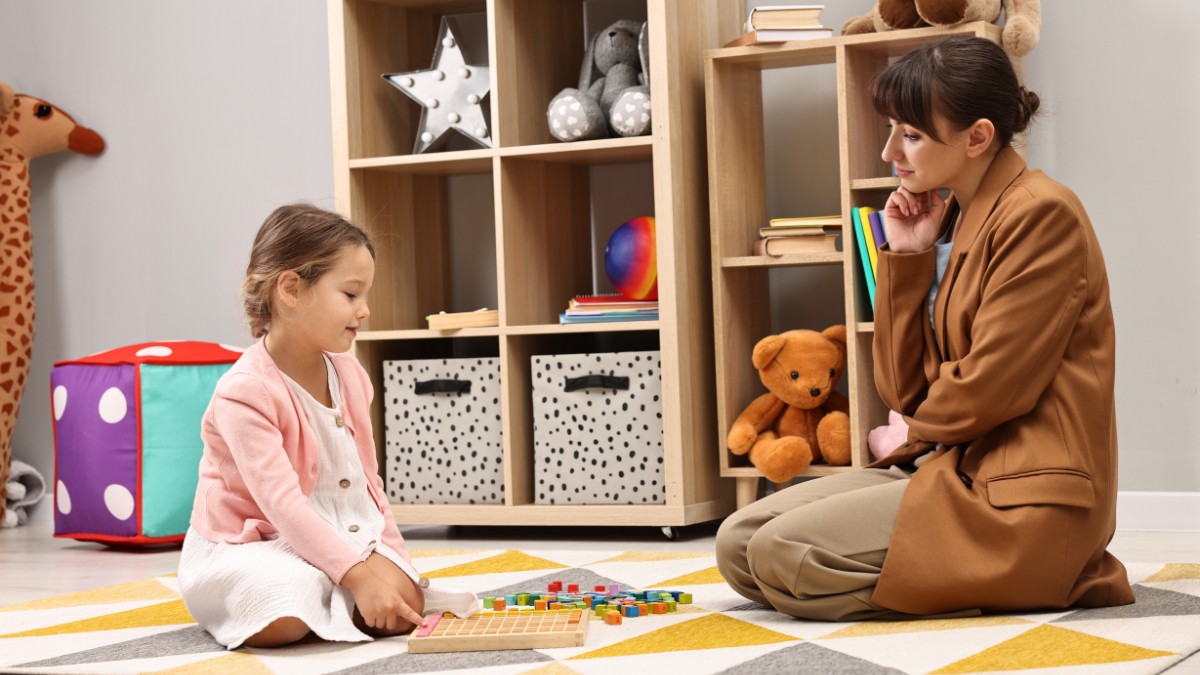Common Examples of Repetitive Behaviors in Autism Explained
Explore examples of repetitive behaviors in autism and learn how to recognize and understand them effectively.
.avif)
Common Examples of Repetitive Behaviors in Autism Explained

Understanding Autism and Repetitive Behaviors
Overview of Autism Spectrum Disorder
Autism Spectrum Disorder (ASD) is a developmental disorder characterized by difficulties in social interaction, communication, and the presence of repetitive behaviors or restricted interests. The symptoms and their severity can vary widely among individuals, ranging from mild to severe. Understanding these behaviors is crucial for providing appropriate support and care.
Importance of Recognizing and Understanding Repetitive Behaviors
Repetitive behaviors in individuals with autism can serve several functions. They may provide comfort, assist in emotional regulation, or establish a sense of predictability in a sometimes overwhelming world. Recognizing and understanding these behaviors can help caregivers, educators, and clinicians to support individuals in a more effective manner.
By identifying the examples of repetitive behaviors in autism, caregivers can create strategies that enhance personal growth while respecting the individual’s unique way of processing the world around them. Understanding these behaviors contributes to better supportive care and can improve overall quality of life.
Sensory-Related Repetitive Behaviors
Sensory-related repetitive behaviors are common among individuals on the autism spectrum. These actions often serve a purpose in helping them cope with various sensory stimuli in their environment. Two notable examples of such behaviors include hand flapping and rocking back and forth.
Hand Flapping
Hand flapping is a behavior where an individual rapidly moves their hands up and down or side to side. This activity can occur during times of excitement, anxiety, or overstimulation.
Hand flapping can appear in different contexts, such as during play or social interactions. Understanding this behavior as a form of communication or coping can help caregivers respond appropriately.
Rocking Back and Forth
Rocking back and forth is another common sensory-related behavior in individuals with autism. This action involves the rhythmic movement of the body from side to side or forwards and backwards.
Like hand flapping, rocking can serve as a mechanism for emotional regulation. It can occur in various settings, such as at home, school, or in social situations. Recognizing rocking as a natural response to overwhelming stimuli can aid in providing better support.
Ritualistic Behaviors
Ritualistic behaviors are common among individuals on the autism spectrum. These behaviors often manifest as strict routines and a preference for consistent patterns in daily life. Understanding these behaviors is essential for providing effective support.
Following Rigid Daily Routines
Many individuals with autism develop rigid daily routines that provide a sense of predictability and security. These routines can include specific times for meals, activities, and personal care. Disruptions to these routines can lead to anxiety and distress.
Need for Unvarying Patterns
The preference for unchanging patterns can extend to various aspects of life, including social interactions, environmental settings, and personal belongings. Individuals may seek comfort in sameness and may become upset if expected patterns are altered.
Recognizing and respecting these ritualistic behaviors is vital in supporting individuals with autism. Understanding their importance can lead to more effective communication and interaction strategies.
Self-Stimulatory Behaviors
Self-stimulatory behaviors are actions that individuals, particularly those with autism, may engage in to help regulate their sensory experiences or emotional states. Two common examples of these behaviors include finger tapping and echolalia.
Finger Tapping
Finger tapping is a repetitive movement where individuals rhythmically tap their fingers on a surface. This behavior can serve various purposes, such as providing a sense of comfort or focus. It may occur during times of stress or excitement and can help individuals manage overwhelming sensory input.
Echolalia (Repeating Words or Phrases)
Echolalia involves the repetition of words, phrases, or sounds heard from others or from media sources. It can be immediate, repeating what was just said, or delayed, recalling a phrase from the past. This behavior may help individuals communicate or process their emotions. Echolalia can be a way for individuals to express themselves when they struggle with spontaneous speech.
Both finger tapping and echolalia are crucial examples of repetitive behaviors in autism. Understanding these behaviors can contribute to a deeper comprehension of how individuals with autism navigate their sensory environments and emotional challenges.
Fixated Interests
Individuals with autism often exhibit fixated interests, which can manifest in various ways. These interests may provide comfort and a sense of control. Recognizing these behaviors can be beneficial in understanding and supporting individuals on the spectrum.
Intense Focus on Specific Topics
A hallmark of fixated interests is the intense focus on specific subjects. Individuals may delve deeply into these areas, dedicating significant amounts of time exploring and learning. Examples include particular hobbies, technologies, or concepts.
The intensity of focus can lead to mastery in these areas, often providing individuals with a sense of achievement.
Collecting and Organizing Objects
Another common manifestation of fixated interests is the collecting and organizing of objects. This can involve gathering items that align with the individual’s interests and creating systems for organization.
The act of organizing these collections can also provide a therapeutic effect, helping individuals feel a sense of order in their environment. Understanding these fixated interests can enhance support strategies for individuals with autism, facilitating communication and engagement.
Emotional Regulation Strategies
Understanding and managing repetitive behaviors in individuals with autism can greatly improve their emotional well-being. This section outlines the importance of recognizing triggers and offers coping mechanisms to help manage these behaviors.
Understanding Triggers
Triggers for repetitive behaviors can vary widely among individuals with autism. Recognizing these triggers is crucial for implementing effective coping strategies. Common triggers include environmental changes, social interactions, and sensory overload.
The following table illustrates typical triggers and their potential impacts:
Identifying these triggers can help caregivers and educators create a supportive environment, minimizing anxiety and the occurrence of certain behaviors.
Coping Mechanisms for Managing Repetitive Behaviors
To effectively manage repetitive behaviors in autism, various coping mechanisms can be employed. These strategies can assist individuals in navigating their emotions and reducing reliance on repetitive actions.
The following table outlines some effective coping strategies along with their descriptions:
Implementing these coping mechanisms can support individuals as they learn to manage their feelings, ultimately enhancing their ability to engage with their surroundings and reducing the frequency of repetitive behaviors.
Sources
https://www.thetransmitter.org/repetitive-behaviors-and-stimming-in-autism-explained
https://www.psychiatry.org/understand-stimming-repetitive-behaviors-purpose
https://www.verywellhealth.com/repetitive-behaviors-in-autism



.jpg)
.jpg)
.jpg)
.jpg)
.jpg)






